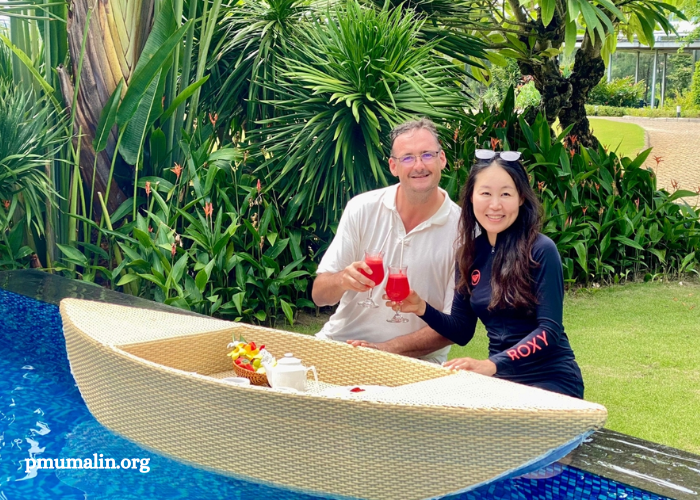In today’s fast-paced world, where demands seem endless and time feels fleeting, achieving a sense of wellness can often feel like an elusive goal. Yet, amidst the chaos, there lies a path to unlocking wellness—a journey toward designing a lifestyle that nurtures not only your physical health but also your mental and emotional well-being. This guide is a roadmap to help you navigate through the complexities of modern life and pave the way for a fulfilling and balanced existence.
Understanding Wellness
Before delving into the intricacies of designing your ideal lifestyle, it’s essential to grasp the concept of wellness. Wellness encompasses more than just the absence of illness; it encompasses a holistic approach to health that integrates various facets of well-being. These include physical, mental, emotional, social, and even spiritual aspects of life. Achieving wellness involves striving for harmony and equilibrium in all these areas, recognizing that they are interconnected and influence one another.
Assessing Your Current Lifestyle
The first step in designing your ideal lifestyle is to conduct a thorough assessment of your current habits, routines, and overall way of life. Take stock of how you spend your time, what activities bring you joy and fulfillment, and where there may be areas for improvement. Be honest with yourself about your strengths and weaknesses, as well as any habits or behaviors that may be hindering your well-being.
Setting Wellness Goals
With a clear understanding of your starting point, you can begin to set specific wellness goals that align with your values and aspirations. These goals should be SMART: Specific, Measurable, Achievable, Relevant, and Time-bound. Whether your objectives involve improving your physical fitness, reducing stress, cultivating healthier relationships, or pursuing personal growth, breaking them down into actionable steps will make them more attainable.
Creating a Balanced Routine
Designing your ideal lifestyle involves crafting a balanced routine that prioritizes activities and practices that promote wellness. This may include regular exercise, mindful eating, adequate sleep, stress management techniques, and opportunities for relaxation and leisure. Strive to create a schedule that allows for both productivity and enjoyment, incorporating activities that nourish your body, mind, and soul.
Cultivating Healthy Habits
Wellness is not just about what you do occasionally but about the habits you cultivate day in and day out. Identify habits that support your well-being and work on integrating them into your daily life. This might involve establishing a morning routine that sets a positive tone for the day, practicing gratitude, staying hydrated, or dedicating time for self-reflection and personal growth. Remember that small, consistent actions can lead to significant long-term results.
Nourishing Your Body
Central to designing a healthy lifestyle is prioritizing the nourishment of your body with wholesome foods and adequate hydration. Aim for a balanced diet that includes a variety of fruits, vegetables, whole grains, lean proteins, and healthy fats. Pay attention to how different foods make you feel and make choices that support your energy levels, digestion, and overall well-being. Hydration is also key, so be sure to drink plenty of water throughout the day to keep your body functioning optimally.
Strengthening Your Mind
In addition to caring for your physical health, it’s essential to cultivate mental resilience and emotional well-being. Incorporate practices such as mindfulness meditation, journaling, or deep breathing exercises into your daily routine to promote mental clarity and stress relief. Engage in activities that challenge your mind and spark creativity, whether it’s reading, solving puzzles, learning a new skill, or engaging in meaningful conversations with others.
Fostering Social Connections
Human beings are inherently social creatures, and meaningful connections with others are vital for our well-being. Make time for nurturing relationships with family, friends, and community members who uplift and support you. Whether it’s sharing a meal, going for a walk together, or simply catching up over the phone, prioritize quality time with loved ones and foster a sense of belonging and connection.
Finding Purpose and Meaning
True wellness often involves a sense of purpose and meaning in life—a feeling that you are living in alignment with your values and making a positive impact in the world. Take time to reflect on what matters most to you and how you can align your actions with your deeper sense of purpose. This might involve volunteering, pursuing creative passions, or engaging in work that feels meaningful and fulfilling.
Embracing Self-Care
Self-care is not selfish; it’s essential for replenishing your physical, mental, and emotional reserves so you can show up as your best self in all areas of life. Prioritize self-care practices that recharge your batteries and bring you joy, whether it’s indulging in a bubble bath, spending time in nature, practicing yoga, or simply taking a few moments to yourself each day to relax and unwind.
Continual Growth and Adaptation
As you embark on the journey of designing your ideal lifestyle, remember that wellness is not a destination but a lifelong pursuit. Stay open to growth and adaptation, be willing to reassess your goals and priorities as circumstances change, and embrace the journey with curiosity and resilience. By committing to your well-being and taking intentional steps toward designing a life that aligns with your values and aspirations, you can unlock the door to a healthier, happier, and more fulfilling existence.
